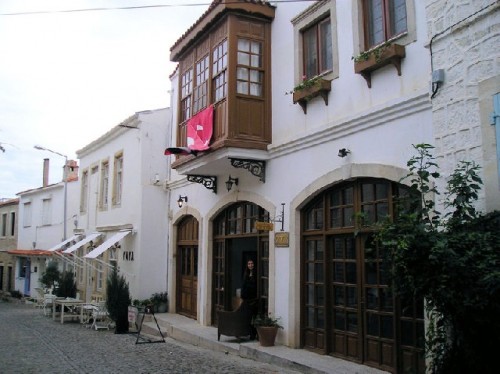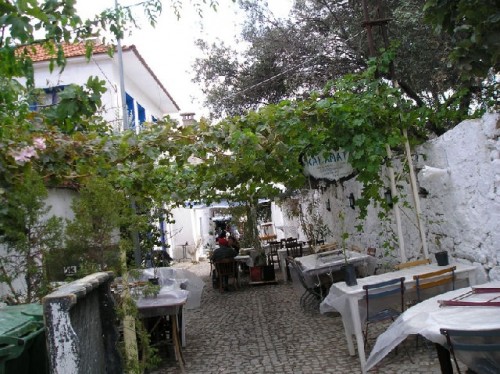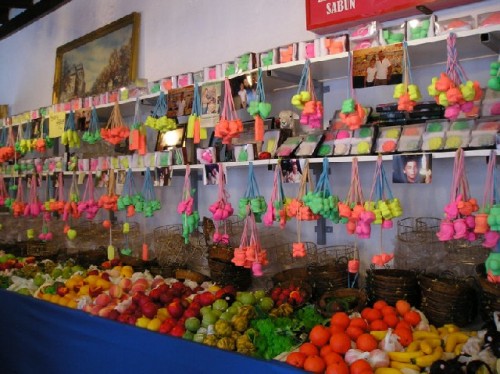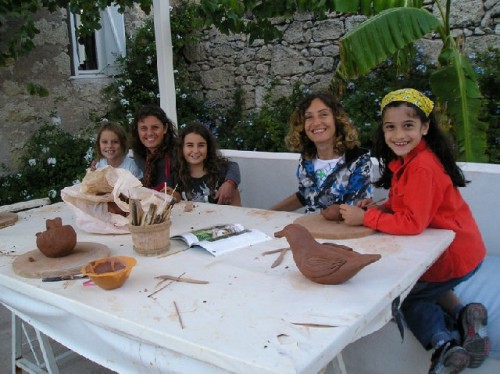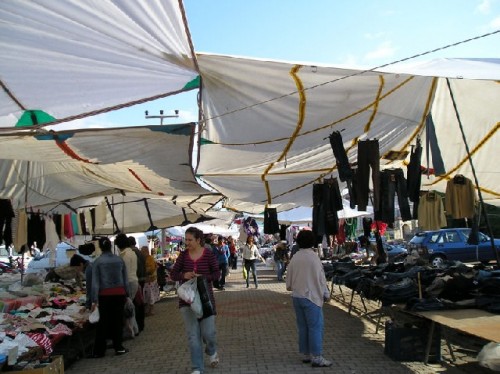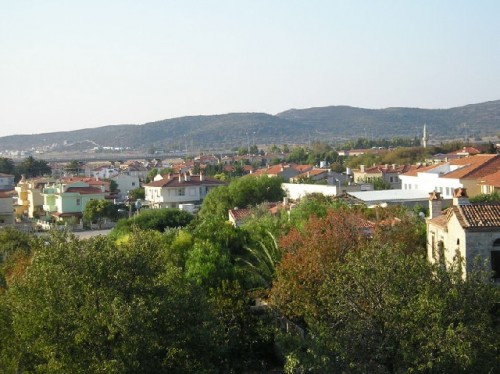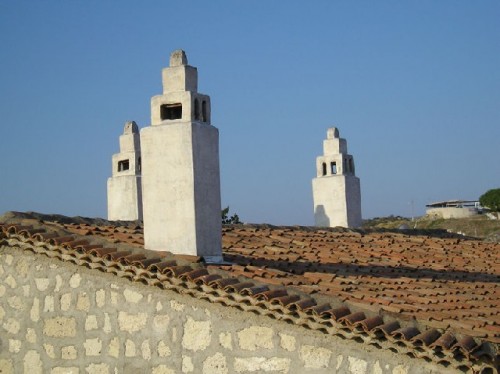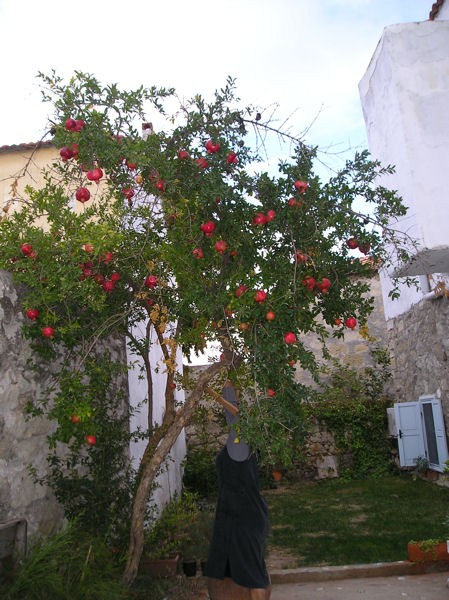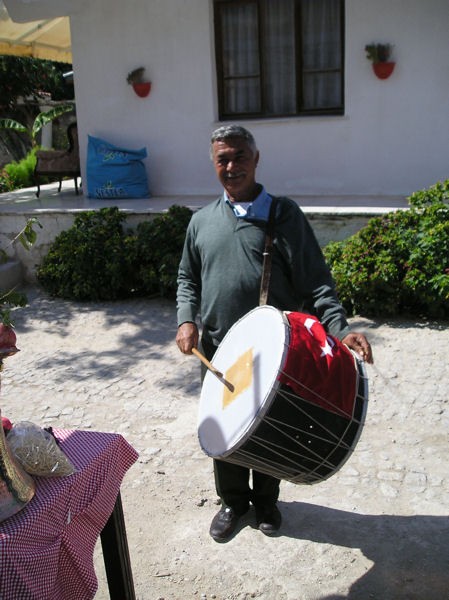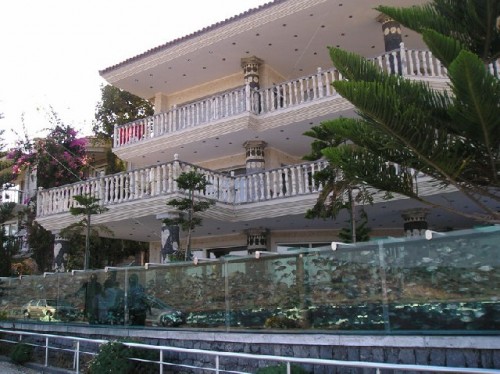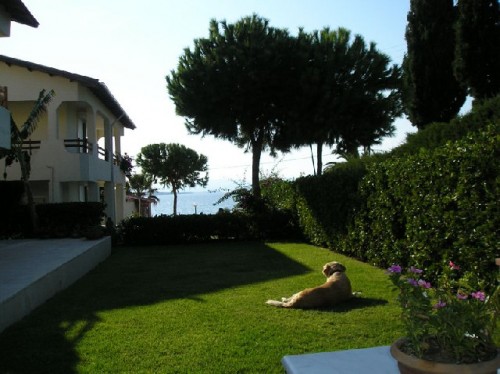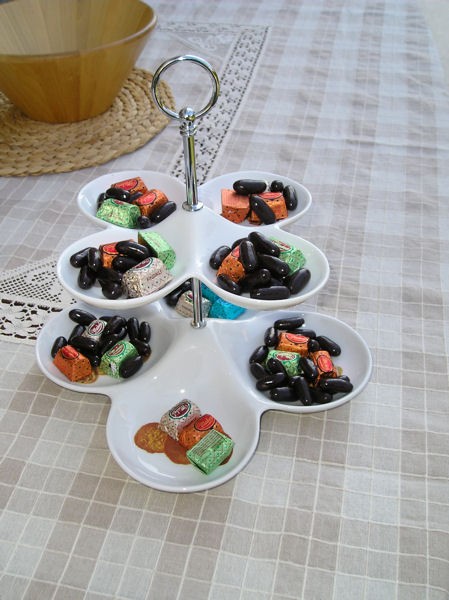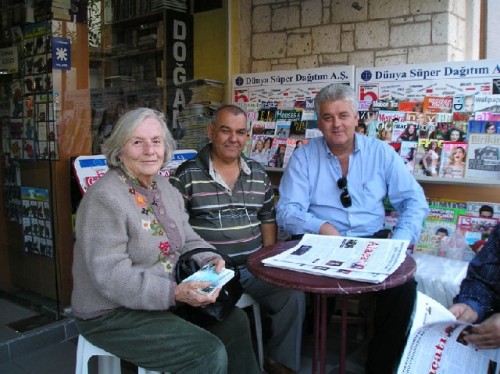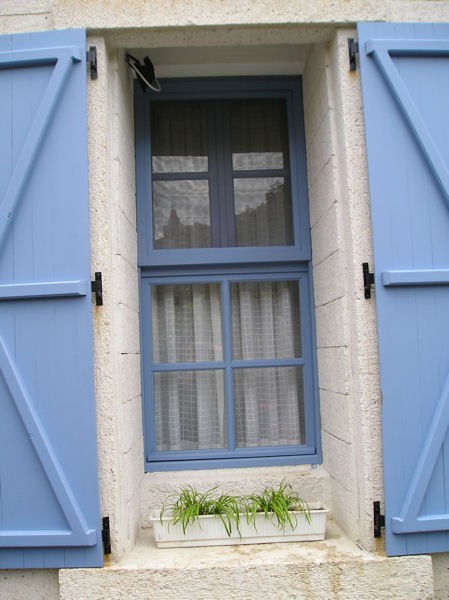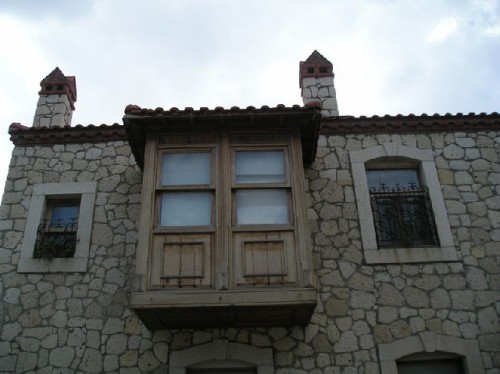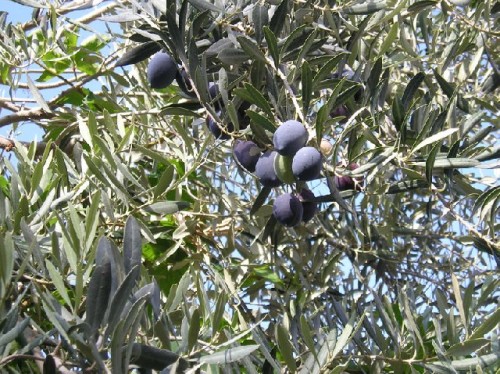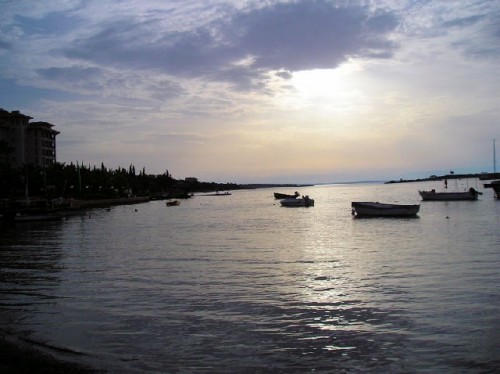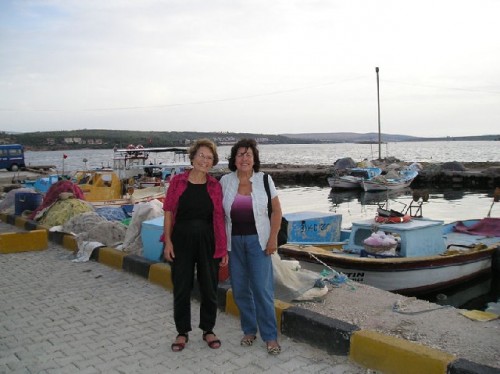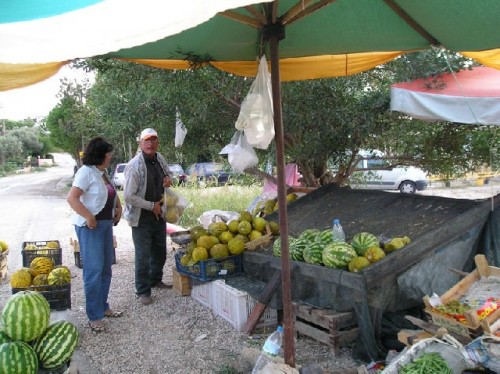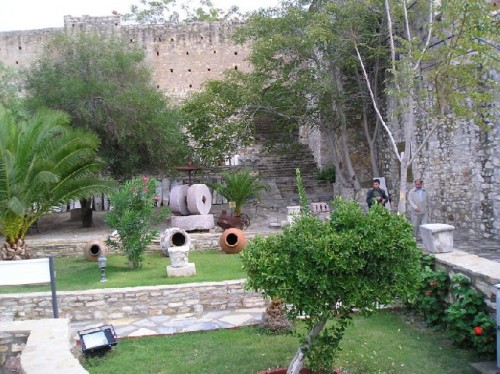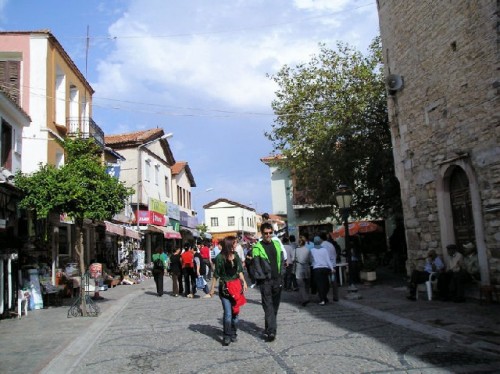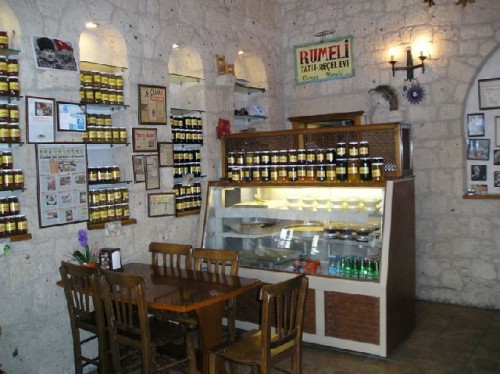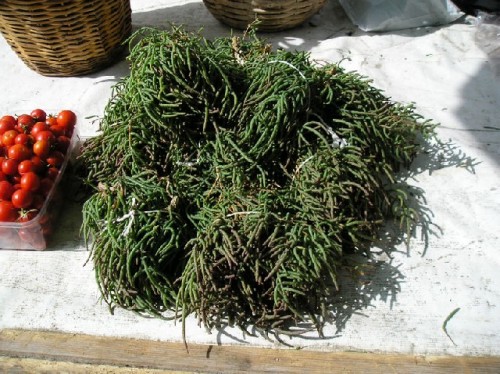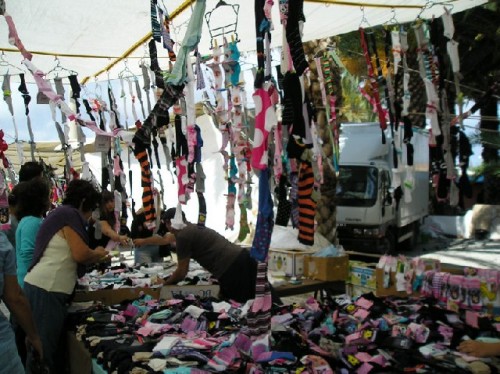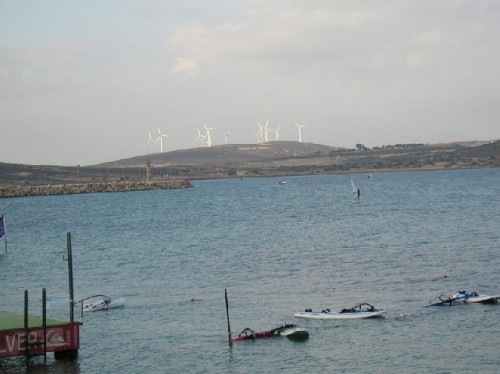Holiday on the Aegean Coast of Turkey
The Cesme peninsula and its famed resort, Alacati
By: Zeren Earls - Nov 28, 2008
In October I had the good fortune to visit three friends who have homes on the great Cesme peninsula that extends out into the Aegean, west and south of Izmir. The area, known in antiquity as Ionia, took its name from the Ionian Greeks, who first settled along this coast and its offshore islands ca 1000 BC. As is often the case in Turkey, the towns where my friends lived were near ancient sites. Three of the twelve Ionian city-states, Erythrae, Clazomenea and Teos are on this peninsula, where I spent a week in t-shirt weather.
It was convenient for me to go from Istanbul to Izmir by bus, since the departure terminal on the Asian side of Istanbul is not far from where I live. Likewise, the arrival terminal in Izmir was close to my destination in Cesme, as opposed to an additional 20 km. from the airport. My overnight trip took seven hours, including a half-hour refreshment stop on the way. Privately run Turkish bus companies offer efficient, sanitary and punctual service.
Alacati
My friend Goksel met me in front of the old town hall, where I was dropped off. A high school classmate and a former parliamentarian from Ankara, she has retired in the charming town of Alacati on the Cesme peninsula. She lives in a restored old house with whitewashed stone walls, and a second-story wooden bay window. We entered the house through a long narrow hallway with high ceilings. Traditional benches with embroidered cushions lined the walls; hand-crocheted curtains hung in the vertical long windows. We climbed the wood stairway to the second-floor receiving room, which opened to an entrée facing the bedrooms, all traditionally furnished with hand-woven textiles. Quickly leaving my bags, I descended to the living/dining room for breakfast.
The breakfast table displayed typical Turkish fare: feta cheese, olives, jams, sliced tomatoes and cucumbers, toast and pita bread served with many cups of hot tea. After breakfast and a short rest, we explored the town on foot. Alacati is an old town, with narrow cobble-stone roads lined with small shops, cafes and restaurants. The town center is closed to vehicular traffic from 11 am to 3am. Once a quiet small town, it has been discovered by both local and international visitors, who enjoy food, drink and camaraderie within a quaint ambience till the early hours of the morning.
Alacati houses are built of white stone quarried in the region. The stones acquire a yellowish taint with age. The thick walls keep interiors warm in the winter and cool in the summer. Many of the houses, once built and occupied by Greeks, who came to the area to work in the vineyards and olive orchards from 1850-1890, have deteriorated, due to the treaty on population exchange, following Turkey's Independence war. According to the treaty, with the exception of the Greeks in Istanbul and the Turks in Western Thrace, Muslims in Greece moved to Turkey and Orthodox Christians in Turkey moved to Greece; two million people were displaced from their homes. In recent years these homes have been restored, either as private residences or as small hotels.
Goksel and I walked through the town center to the landmark old windmills on the highest hill. These windmills in stone were built in the late 19th century to grind flour, and now grace the landscape as reminders of bygone days. On the way I noticed a shop with colorful displays of soap, molded to look like fruit, from grapes to bananas, placed in bins. Charmed by the novelty, I decided to come back later to buy a basket of "peaches" and "pears". We continued our walk, following signs to the Arts and Crafts Gallery, where we watched a ceramics class for children and bought one-of-a-kind textiles.
In the evening we drove to a fish restaurant in Ilica, a resort town known for its thermal springs. At Yusuf's Place, we enjoyed turbot and salad, preceded by cold and warm appetizers, such as marinated dried tomatoes, sardines, fried eggplant and peppers with yogurt, and calamari. Although full, we complied with the Turkish tradition of finishing a fish meal with halvah to aid digestion. When we returned to Alacati around 11pm, the streets were filled with people; vendors crowded the sidewalks with corn on the cob, steaming in big kettles; cafes and pudding shops attracted passers-by with mastic-flavored specialties, including coffee. Mastic is plentiful in the region; much of it comes from the Greek island, Chios, 400 meters from the shore.
The next day was the first of a three-day Bayram, a religious holiday following Ramadan, called "candy festival" by Turks, because of the tradition of offering sweets to friends and relatives who visit. We were invited for breakfast to the Sesil Hotel, whose owner was a friend of Goksel. The spread, which would easily qualify as brunch, included home-made pastries, eggs, a variety of cheeses, jams and breads, accompanied by tea. The extensive breakfast ended with baklava, coffee and sour cherry liqueur. I was able to see a few of the unoccupied rooms, whose elegant furnishings were for sale to customers wishing to purchase them at the end of their stay. My take was a bag of home-made noodles, courtesy of the hotel's owner/manager. As we stepped out to the street, we were greeted by a drummer, who played for us cheerfully in return for Bayram tips.
Following lunch, yes, we ate again; we went for a drive along the shore at the western end of the peninsula, all the way to the tip to Dalyankoy (Dalyan village); stopped to admire beautiful homes, some with aquariums, running the length of the sidewalk for the pleasure of passers-by. In Ciftlik koy (Farm village), we paid a Bayram visit to a friend, whose garden with water view was a delightful stopping place to sample an assortment of sweets.
Back in Alacati, we were welcomed by the mayor, who was enjoying tea in front of a bookstore with the owner. As a respected year-round resident, everyone seemed to know Goksel whenever we walked about; the mayor was no exception. He asked us to join him for tea as he pointed to a couple of stools. I later found out that he had banned plastic chairs in all food establishments to maintain the town's historic character.
The next morning I went up to the roof terrace to enjoy the surrounding view. The panorama was an endorsement for the picturesque town. A cluster of white buildings with red-tiled roofs nestled against low hills in the distance; a minaret pierced through olive trees. Nearby ripe red pomegranates beckoned to be picked. I descended to the garden to pick a few big ones to carry to Istanbul.
Ulku, another high-school classmate, who spends her summers with her daughter in Alacati, joined us for breakfast. I went home with her for the next four days. Their place, built by her Italian son-in-law, was a modern version of an Alacati house, keeping in character with its whitewashed thick walls. Blue wooden shutters decorated the walls of the single-storied house and revealed flower pots in the recessed windows. All the rooms lined both sides of a long corridor featuring skylight windows. Located on a quiet back street, the house opened onto a patio with a built-in fire place and an olive tree. The interior decor reflected the simplicity of the architectural design, with sparsely placed contemporary furniture.
Exploring the back streets of Alacati revealed beautifully renovated nineteenth-century homes, boutique hotels with pools and quiet courtyards, as well as cafes and restaurants under grape arbors or olive trees. After a break for mastic-flavored coffee, we strolled on to the antique market. Since the town center is closed to all traffic but motorcycles, the vendors had set up stalls in designated areas. Open every day, the antique market offered a mixture of second hand goods and local crafts. I bought a light blue table cloth with traditional black motifs, printed using a stone block.
The next day we drove to the town of Sifne on the northern coast of the peninsula. The Thermal Hotel facing the beach provided deep and shallow hot pools, in addition to an indoor one for physical therapy. After a dip in the Aegean, which is very salty for swimming without goggles, we jumped into the thermal pool at 42 degrees centigrade. Feeling refreshed, we continued our drive, passing fancy homes to Pasha Harbor, and then traveling east on the coastal road, arrived in Ildiri (Eritrea), a picturesque fishing village. Passing fishermen mending nets, we settled at Manzara Kahvesi (Scenic Coffee House) to view the sunset. While the sun gradually disappeared behind boats, islands, clouds and mountains, leaving spectacular streaks in the dimming sky, we enjoyed gozleme, a thin pastry cooked on a hot metal sheet and filled with feta cheese and herbs. For desert we had lokma, small balls of syrup-dipped fried dough, accompanied by tea.
Another excursion was to Cesme, a busy port and resort at the western end of the peninsula. It looks out towards the Greek island of Chios, to which there is a regular ferry service. The port at Cesme is dominated by a Genoese fortress of the late 13th century, an impressive structure with a towered citadel surrounded by a double line of defense walls. Cesme also has two 17th-century mosques. Walking through the market, we stopped for mastic-flavored ice cream and then went into a sweet shop to purchase jam, made from the region's famed small green figs.
Ulku was keen on my tasting other local Aegean specialties. On our way home we ate at Sevki's Place, known for its kumru, which means turtledove, but actually looked like a small pizza with sausage, cheese and tomatoes. We also had cigirtma, charred eggplant cooked in olive oil with garlic and tomatoes.
My final day in Alacati coincided with the Saturday farmers' market, which, in addition to local produce, offered clothing and household goods at very modest prices. Wending through a riot of color and cacophony, my purchases ranged from Kalamata olives and dried sour cherries to bath and kitchen towels, cushion covers, a pair of pants and a shirt.
Afterwards, not to miss out on Alacati's renowned windsurfing bay, we headed out 4 km from the town center. A wind farm stretched ahead on the slopes of a hill. Wind turbines, placed facing strong winds, stood 50 meters high from the ground, waiting for the wind to accelerate. Once the wind speed reaches 25 meters per second and the long blades of the turbines start to turn at a speed of 29 rotations per minute, electrical energy begins to be produced. Alacati has set an example for similar investments in other cities in Turkey.
The bay is lined with windsurfing clubs and surfing schools because of favorable wind conditions most of the year. However, with the start of the school year, business had slowed down, and many of the clubs were closing until the spring. Over a cup of tea in one of the clubs, we watched a few windsurfers on the water, while surrounded by the youthful energy of others on the terrace.
The following morning Ulku drove me to my next holiday destination, Zeytinalan, a village outside Urla, the oldest town on the peninsula west of Izmir. However, we did not pass up the opportunity to have breakfast in the Tepe Coffee House in Zeytinler, famous for its village breakfast, which included black mulberry jam, clotted cream, honey, assorted olives and bread straight from the oven. The word for "olive" in Turkish is "zeytin"; many places are named after this fruit, a bounty in the region.
My visit to sites of antiquity with my friend Evin, who is a professional guide, will follow in the next article.

